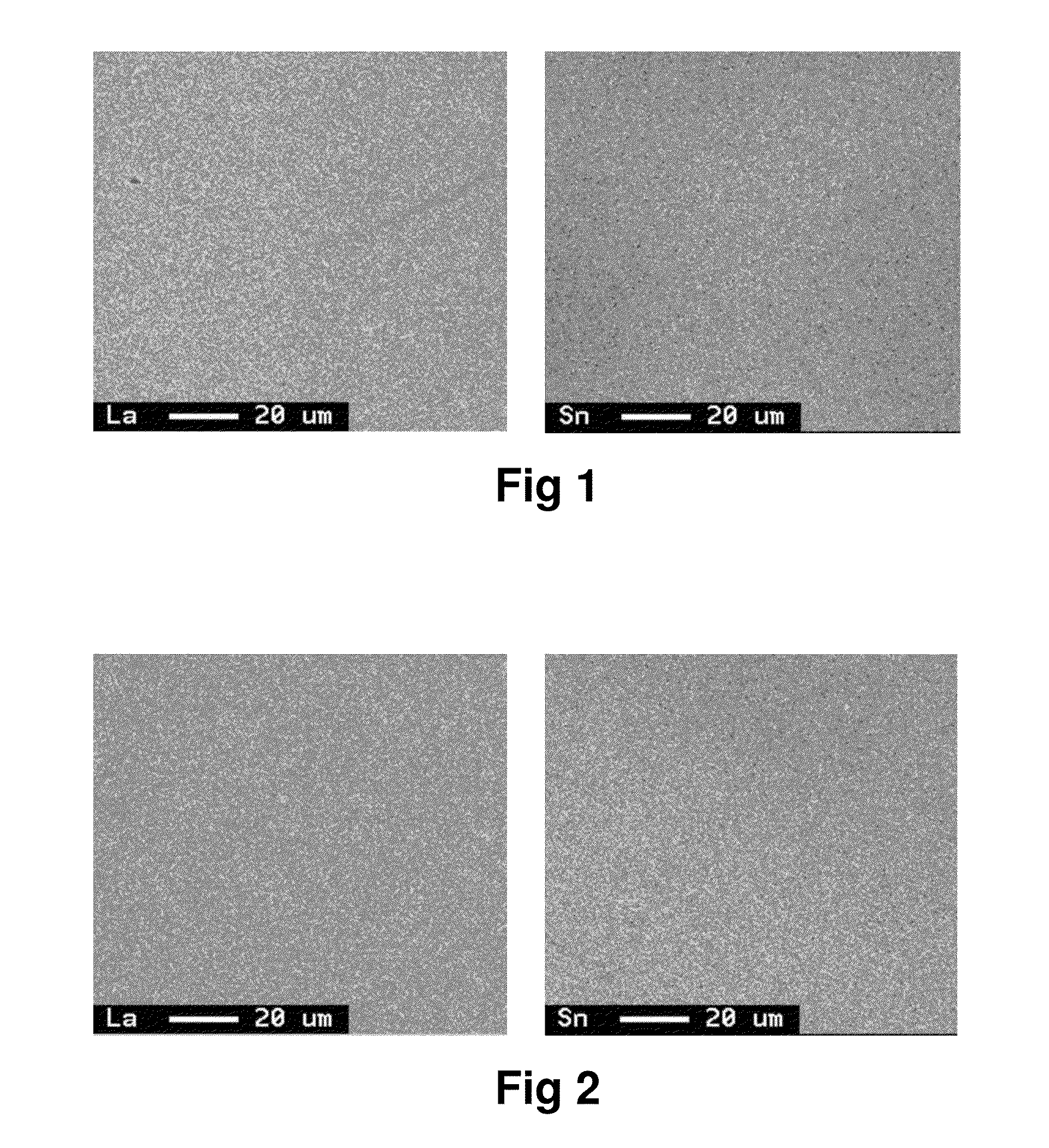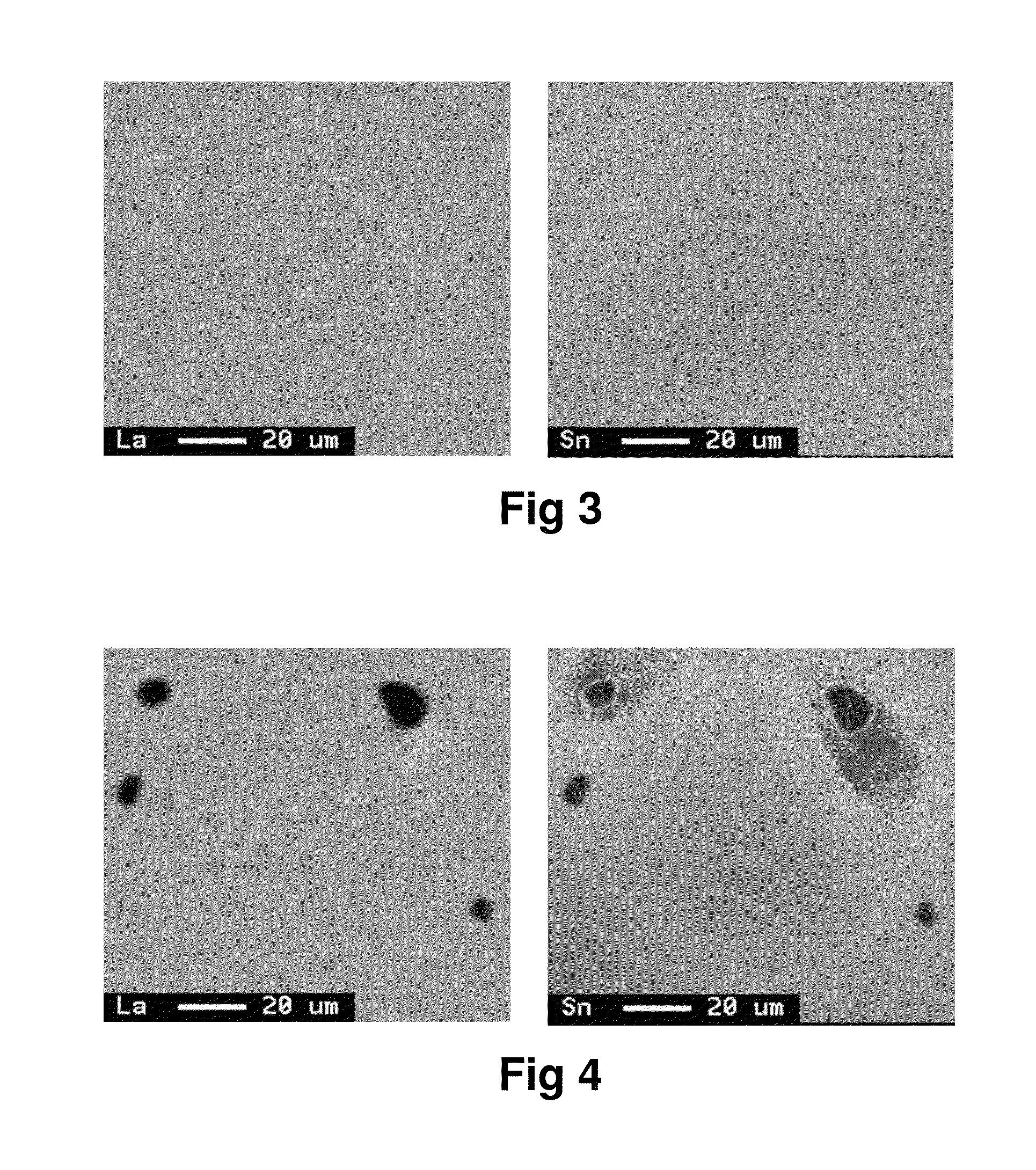Hydrogen absorbing alloy, negative pole, and nickel-hydrogen secondary battery
- Summary
- Abstract
- Description
- Claims
- Application Information
AI Technical Summary
Benefits of technology
Problems solved by technology
Method used
Image
Examples
example 1
[0057]Raw materials were suitably measured out so as to obtain an alloy of the composition shown in Table 1, and melted into an alloy melt in an argon gas atmosphere in a high frequency induction furnace. The pouring temperature of the melt was set to 1450° C., and an alloy ingot of 20 mm thickness was produced using a water-cooled copper mold. The ingot was heat treated at 1100° C. for 7 hours in an argon gas atmosphere, and then pulverized in a stamp mill to obtain alloy powder having a mean particle size (D50) of about 50 μm. The alloy powder was subjected to X-ray diffraction using Cu-Kα radiation as an X-ray source to confirm that the main phase was a CaCu5 crystal phase. It was also confirmed by fluorescent X-ray analysis and ICP that the obtained alloy had the desired composition. A surface of section of the alloy was subjected to area analysis with EPMA at a magnification of 800×, accelerating voltage of 15 kV, current of 1×10−7 A, and beam diameter of 1 μm to observe no pre...
example 2
[0070]An ingot was prepared in the same way as in Example 1 except that the raw materials were measured out so as to obtain an alloy of the composition shown in Table 1, the pouring temperature was set to 1450° C., and the heat treatment was carried out. The heat treatment of the ingot was carried out at 1150° C. for 7 hours in an argon gas atmosphere. The obtained ingot was subjected to the analyses in the same way as in Example 1 to confirm that the main phase was a CaCu5 crystal phase. It was also confirmed that the obtained alloy had the desired composition, and no precipitated phase having a grain diameter of not less than 5.0 μm was observed in a La-mapping image obtained by the area analysis with EPMA. Further, the characteristics evaluation tests were conducted in the same way as in Example 1. The results are shown in Table 2.
example 3
[0071]An ingot was prepared in the same way as in Example 1 except that the raw materials were measured out so as to obtain an alloy of the composition shown in Table 1, the pouring temperature was set to 1450° C., and the heat treatment was carried out. The heat treatment of the ingot was carried out at 1075° C. for 7 hours in an argon gas atmosphere. The obtained ingot was subjected to the analyses in the same way as in Example 1 to confirm that the main phase was a CaCu5 crystal phase. It was also confirmed that the obtained alloy had the desired composition, and no precipitated phase having a grain diameter of not less than 5.0 μm was observed in a La-mapping image obtained by the area analysis with EPMA. Further, the characteristics evaluation tests were conducted in the same way as in Example 1. The results are shown in Table 2.
PUM
| Property | Measurement | Unit |
|---|---|---|
| Length | aaaaa | aaaaa |
| Percent by mass | aaaaa | aaaaa |
| Percent by mass | aaaaa | aaaaa |
Abstract
Description
Claims
Application Information
 Login to View More
Login to View More - R&D
- Intellectual Property
- Life Sciences
- Materials
- Tech Scout
- Unparalleled Data Quality
- Higher Quality Content
- 60% Fewer Hallucinations
Browse by: Latest US Patents, China's latest patents, Technical Efficacy Thesaurus, Application Domain, Technology Topic, Popular Technical Reports.
© 2025 PatSnap. All rights reserved.Legal|Privacy policy|Modern Slavery Act Transparency Statement|Sitemap|About US| Contact US: help@patsnap.com



